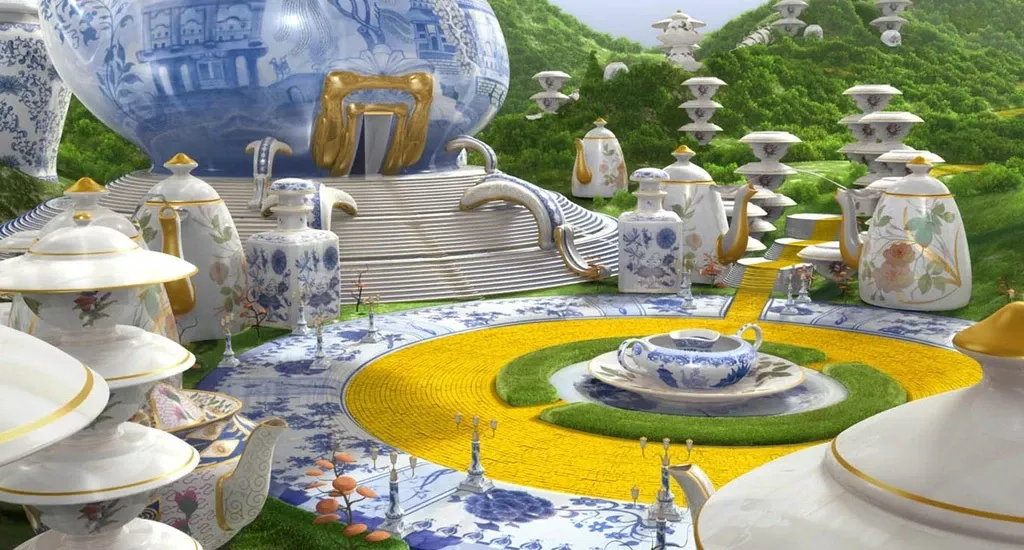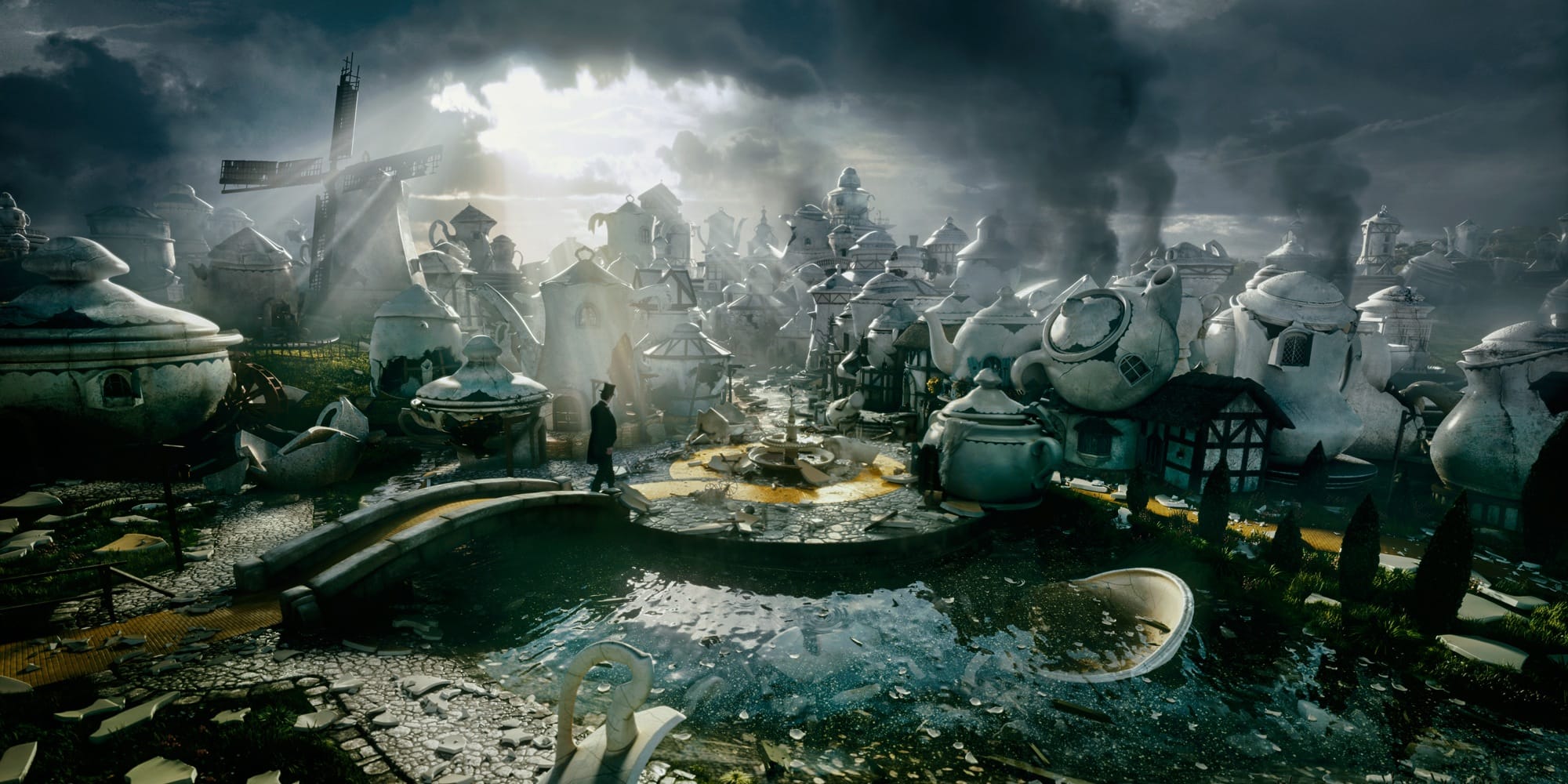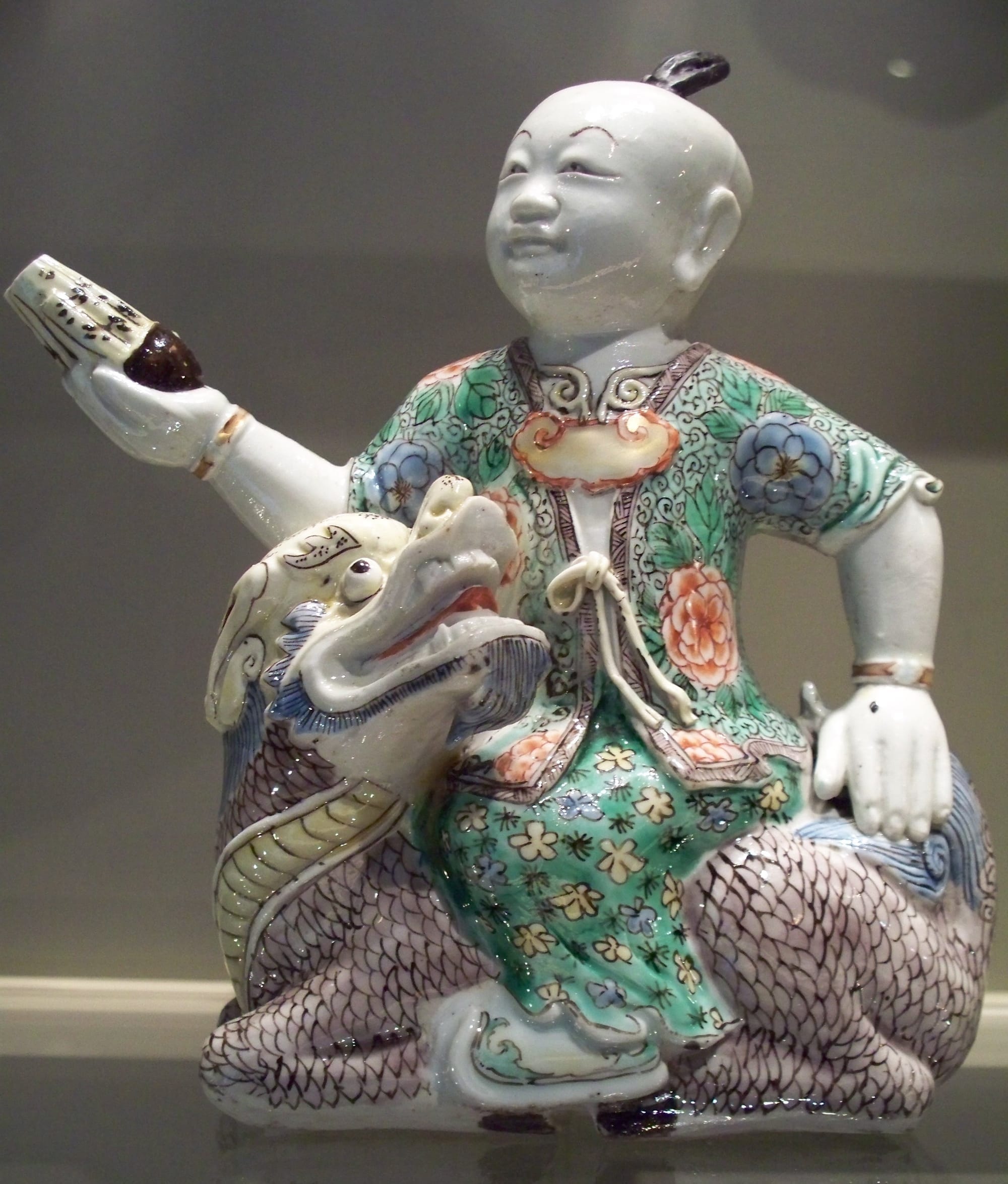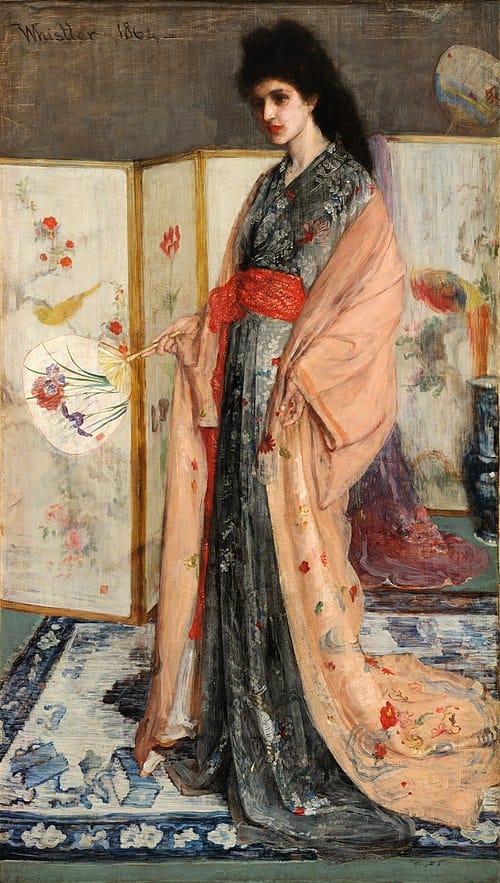The Dainty China Country

In L. Frank Baum's original novel, The Wonderful Wizard of Oz, there is a chapter called “The Dainty China Country.” When it begins, Dorothy Gale and friends have encountered a Great Wall of China. Sitting on top, they are surprised to see a country of shining white, a vast expanse that stretches to the edge of the sky. Below them are pretty little china houses painted bright colors. The people are small too.

Climbing down, the travelers take a closer look. But then things turn nasty as the locals become frightened and there is violence. A startled cow breaks its leg off when it kicks the milkmaid and the milkmaid is injured. She blames the foreigners and rallies many other china people around her. When Dorothy suggests to one young princess that life might be better in America, things quickly turn ugly. Scholars write diatribes against the foreign devils, accusing them of disturbing the dragon’s vein, the feng-shui.
OK, I made that bit up. But word reaches the Empress, who uses the incident to distract attention away from the fact that her china people have no freedom. If the original protests had been against the Empress; now they are turned against the foreigners. Dorothy realizes this is not a dream and she and her friends flee the country. Here's a link to the chapter...

The idea of China being made of porcelain was not a new one, once porcelain became popular throughout Europe from the Ming dynasty onwards. Indeed it was because Chinese porcelain was so popular that it became known as "china." Above is a Qing teapot from around 1700. This idea also put in an appearance in literature, for example, Hans Christian Andersen's tale The Nightingale (1843), which begins this way:
In China, you know, the emperor is a Chinese, and all those about him are Chinamen also. The story I am going to tell you happened a great many years ago, so it is well to hear it now before it is forgotten. The emperor’s palace was the most beautiful in the world. It was built entirely of porcelain, and very costly, but so delicate and brittle that whoever touched it was obliged to be careful.
Such Orientalist ideas made their way into 19th century painting. Below is Rose and Silver: The Princess from the Land of Porcelain (better known as The Princess from the Land of Porcelain) by American expatriate painter James McNeill Whistler from 1863-65. The woman is obviously not Chinese, so there are mixed messages here.

Better to be a broken piece of jade than an intact piece of pottery.
宁为玉碎,不为瓦全 (link)
